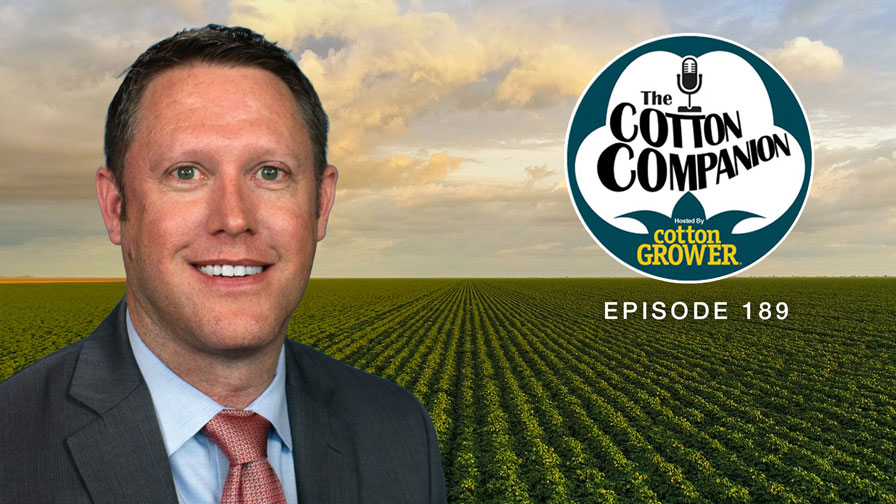It’s a Jeans World: Doing it with Denim
It’s really no mystery why some of our most useful inventions have roots that date back hundreds of years. After all, necessity is the mother of invention.
Consider denim, a fabric that dates back to the Middle Ages and has since become is the single largest consumer of cotton, accounting for approximately 14 percent of cotton consumption worldwide. In 2007, the denim and jeans market worldwide topped US$52 billion and is projected to grow to US$56 billion by 2014.
Those kinds of numbers suggest that consumers don’t just want denim, they need denim. That’s a dependable lifeline for an industry retooling itself after a year and half of upheaval and unrest.
Projecting increased demand is well and good, but what are the critical success factors that will drive this growth? What does our industry have to do in order to realize these projections? These are questions that demand answers up and down the denim value chain.
Joined at the Hip
When evaluating the market, it’s typically described as denim and jeans. Denim producers will tell you it is impossible (or at least impractical) to separate the two. Although exact figures are difficult to come by, jeans account for somewhere between two-thirds and three-fourths of total denim use. And jeans remain a staple in wardrobes all around the world.
North America is the number-one consumer of jeans: the average American female owns 7 pairs of jeans and the average American male, 8 pairs. On a global scale, there exists 0.27 pairs of jeans for every man, woman, and child on the face of the earth – a number projected to grow to 0.28 pairs in 2014 (an increase of 130 million pairs of jeans).
In 2008, Cotton Incorporated conducted interviews in 10 countries to gain a better understanding of consumer attitudes and behavior related to clothing, shopping and textiles. The results gave a strong “thumbs up” for denim. Globally, 62 percent of consumers said they love and enjoy wearing denim.
Dr. Jeffrey Silberman, executive director of the International Forum for Cotton Promotion and chairperson of the Textile Development and Marketing Department of the Fashion Institute of Technology (FIT) in New York City, says jeans will continue to be a major consumer of cotton. He sees world demand as “just beginning,” and points to a number of factors.
Jeans, particularly loose-fitting jeans, are gaining popularity in Asia. Plus, the trend to business casual attire continues to spread around the world, opening new markets for jeans and other denim apparel.
The latter development relates to jeans as a fashion statement, something Levi Strauss probably never envisioned when he introduced blue jeans to the mainstream in the mid-1800s. His first customers were adventurous, independent thinking entrepreneurs leading the Gold Rush in the American West.
More than a century and a half later, this association of blue jeans with independent thinkers endures and continues to drive the market. Jeans are seen by many wearers as a nonconformist fashion statement, a concept fostered by Hollywood and clever marketing that helped push premium brands (costing US$150-$200 a pair) to unexpected market acceptance.
With the economic slowdown, the price for premium jeans has leveled off, but remains very strong in the US$80-$85 range. Although premium jeans account for only 2 percent of denim jeans offerings at retail, this key category sets trends for the entire denim jeans market in product styling, fit, fiber and finishes that appeal to young, affluent fashion innovators.
According to Cotton Incorporated’s Lifestyle Monitor, buyers of premium jeans are more likely than other consumers to consider quality more important than price. They are also more likely to associate natural fibers such as cotton with high quality and to be willing to pay a premium for natural fibers. On average, premium denim jeans have a higher cotton content than lower-priced jeans (99 percent vs. 95 percent).
Fashion Meets Sustainability
Jeans have another distinction, probably the only apparel that designers ask the manufacturers to distress with fading, worn areas, even rips and ragged holes to create a vintage look.
And designers want perfection, even in matters of stress. The faded area or the ragged hole must look the same and be in the same exact location on each pair of jeans produced. PCCA’s Denimatrix subsidiary is now using laser technology at its cut and sew denim plant in Guatemala City to produce vintage looks.
The technology is about more than just looks. First introduced in 2001 by Jeanologia, textile lasers have advanced to such a degree the system can now scan a vintage pair of jeans and reproduce the exact look, down to the holes and abrasions. The system also eliminates the time and hard labor traditionally needed in the factory to achieve these looks. More importantly, it is more environmentally friendly because it eliminates the need for chemical abrasives.
Growing pressure on the textile industry to reduce consumption of energy and water and to lower carbon footprints means that sustainability is a key to market growth. Speaking at a conference hosted by the American Association of Textile Chemists and Colorants in December, 2009, Len Farias, a representative of Cotton Incorporated, reported the global production of all fibers consumes 1 trillion gallons of water, 33 trillion gallons of oil and 20 billion pounds of chemicals annually.
Last year Jeanologia also introduced an industrial washing machine, the G2. Rather than relying on the traditional combination of water and chemicals to create various shades of denim, the G2 uses a process that relies on air. In addition to eliminating the use of water and chemicals, the G2 rids the finishing process of toxic emissions and dumping, and reduces overall energy use.
The sustainability advances don’t stop there. In December 2009, biotechnology firm Genencor added another item to its suite of PermaGreen eco-friendly denim processing products. PermaGreen EcoLight 1 is a liquid biodegradable enzyme that can be used in the laundering process to attain a vintage look in denim. When used with other PermaGreen products that allow the low-temperature denim fading and abrasion, Genencor believes water and energy usage can be cut by 40 percent to 70 percent.
In 2009, Cotton Incorporated released a 50-page report titled, “A World of Ideas: Technologies for Sustainable Cotton Textile Manufacturing.” In it, 26 existing and developing technologies are recommended to reduce water, energy and chemical usage.
According to the report, “The cotton textile industry can reduce the environmental footprint at least 50 percent by employing technologies currently used in modern plants located in the world’s major textile production regions.”
For example, applying dyes to cotton with a foam requires half the amount of water to be used, gives greater control of the dye and allows for quicker drying. In use for more than 25 years, foam dyeing is now being more widely adopted.
Looking Ahead
Add a new word to your vocabulary: jeggings. One of the hot fashion trends for this spring, jeggings, a combination of jeans + leggings, are the most in-demand look in denim right now, according to Lifestyle Monitor. “Also to be found in the chic denim circle: skinny jeans that puddle at the ankle as well as straight-cut boyfriend jeans that are rolled up at the bottom,” they report.
Colors expected to dominate this spring are gray and white, with electric blue reserved for the younger set. Levi’s is offering destructed styles that have a well-used look about them, modern interpretations of tie dyes that have a soft, water appearance, and light indigos with soft, salt-washed color.
Another innovation is the introduction of jeans with Storm Denim water repellency, a garment application that offers repellency, protection from the cold and damp, and breathability.
Innovative designers also use denim for everything from shirts, vests, ties, bandanas, cummerbunds, belts, caps, and shoes to cocktail dresses and tuxedos. Denim is used in upholstery, pillows, drapes, rugs and with the Green Movement calling for more use of natural materials, denims share of the non-apparel market can be expected to grow. And that’s good news for the cotton industry and consumers alike.









